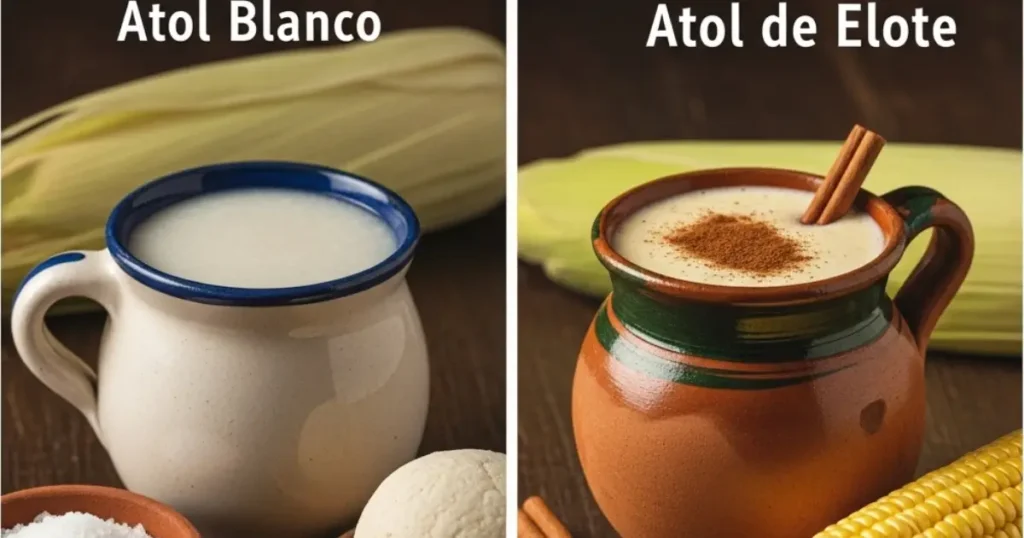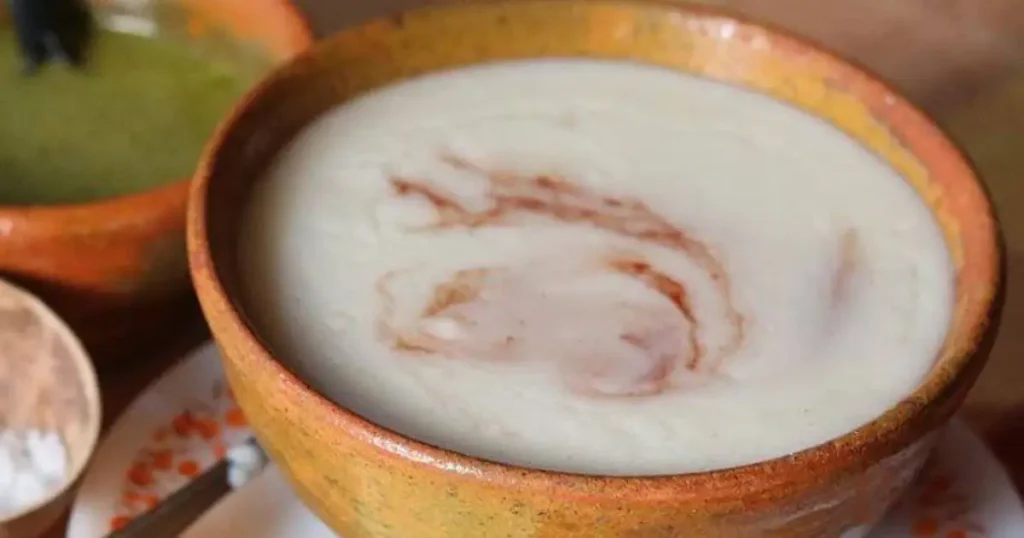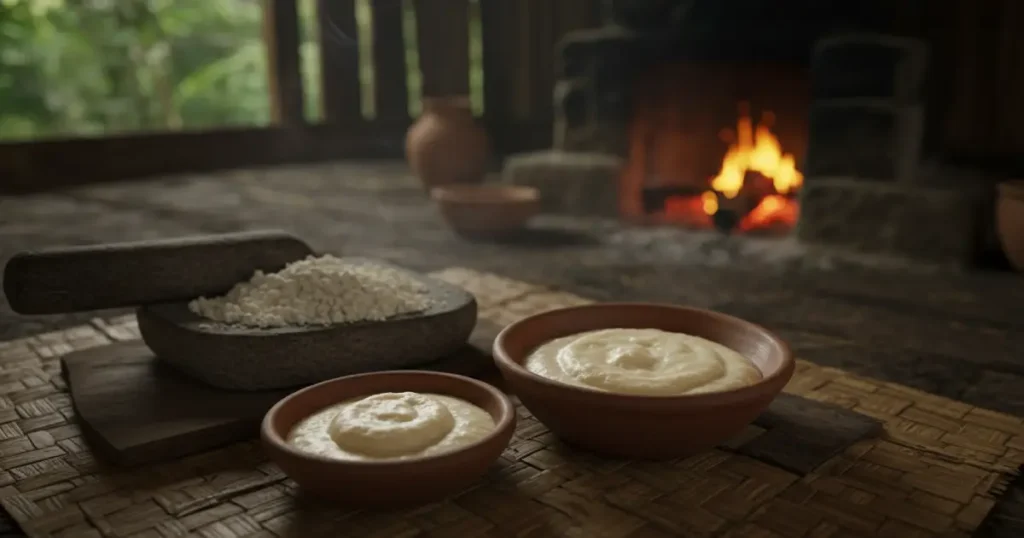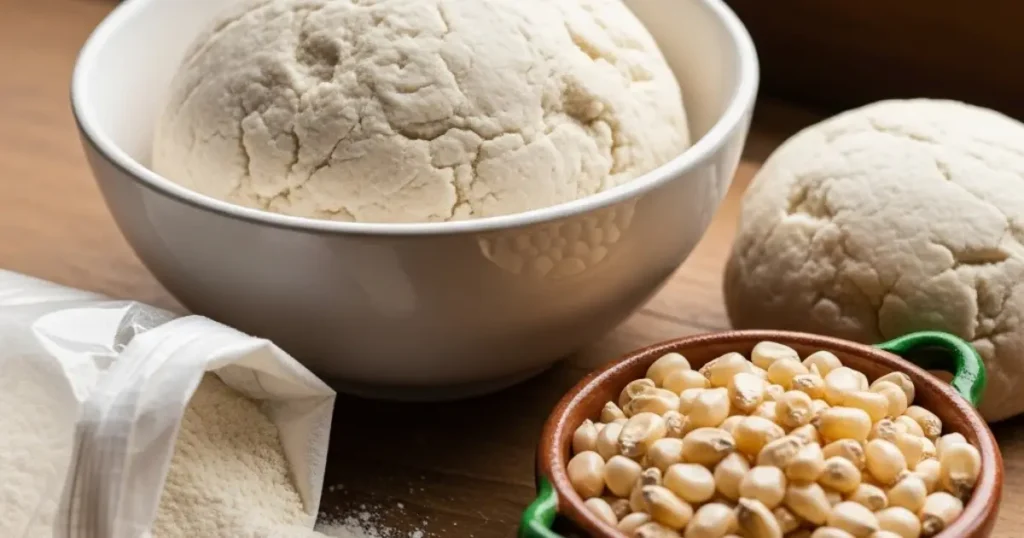
In the rich culinary landscape of Guatemala, where corn stands as a sacred pillar of gastronomy, a humble yet profoundly significant beverage holds a special place: Atol Blanco. Unlike its sweeter cousin, Atol de Elote, Atol Blanco (White Atol) is a traditionally savory corn-based drink, often enjoyed as a nourishing light meal or a comforting staple, especially when paired with its classic accompaniments.
This ancient elixir, with roots stretching deep into Mesoamerican history, offers a unique taste of Guatemalan heritage, a testament to the enduring versatility and cultural importance of maíz.
Understanding Atol Blanco: More Than Just a Drink

Atol Blanco is a simple yet profoundly satisfying beverage prepared from white corn masa (dough) or corn flour, water, and salt. Its name, “White Atol,” directly refers to the color derived from the white corn used in its preparation. Unlike the sweet Atol de Elote, which is made from fresh sweet corn and often includes milk and sugar, Atol Blanco is inherently savory. Its consistency can range from a thin, easily drinkable liquid to a thicker, almost porridge-like gruel, depending on regional customs and personal preferences.
This unadorned character is precisely what makes Atol Blanco so versatile. It serves as a neutral, comforting base, often enhanced with various flavorful additions right before serving. The most traditional and beloved way to enjoy Atol Blanco in Guatemala is with a hearty spoonful of cooked black beans, a sprinkle of ground toasted pepita (pumpkin seed), a dash of chili powder (often Chile Cobanero), and a squeeze of lime juice. This combination transforms the simple atol into a more substantial and nutritionally balanced offering.
A Journey Through Time: The Pre-Hispanic Origins of Atol Blanco

The history of Atol Blanco is inextricably linked to the ancient civilizations of Mesoamerica, particularly the Maya, for whom corn was not just a food staple but a divine substance, central to their creation stories and way of life. Atoles, in various forms, have been consumed in this region for millennia. The simplest atoles were likely made from ground corn and water, serving as a fundamental source of sustenance.
Atol Blanco, in its unadorned form, is believed to be one of the oldest and most traditional types of atol. Its simplicity speaks to its ancient origins, a time before the widespread availability of sweeteners or dairy. The practice of nixtamalization – treating corn with an alkaline substance like lime (cal) or ash – was crucial in Mesoamerican cultures. This process not only softened the kernels for grinding but also unlocked essential nutrients like niacin, making corn a more complete food source. The masa derived from nixtamalized corn forms the very foundation of Atol Blanco.
With the passage of time and the intermingling of cultures, particularly after the Spanish colonization, new ingredients and culinary techniques were introduced. However, Atol Blanco has retained its elemental character, a direct link to the ancestral ways of preparing and consuming corn. Its enduring presence in Guatemalan cuisine is a testament to its cultural resilience and its deep-rooted importance.
The Heart of the Matter: How Atol Blanco is Made
The preparation of authentic Atol Blanco is a straightforward process, though it requires care and attention to achieve the desired texture and flavor.
Core Ingredients:

- White Corn Masa or Masa Harina: The foundation of Atol Blanco. Traditionally, fresh masa (dough) made from nixtamalized white corn is used. This can be obtained from local tortillerías or markets in Guatemala. Alternatively, high-quality white corn flour (masa harina specifically for tortillas or atoles) can be used.
- Water: The primary liquid for creating the atol.
- Salt: A crucial ingredient to enhance the savory flavor.
Traditional Preparation Steps:
- Dissolving the Masa: If using fresh masa, it is gradually dissolved in a portion of the water, working out any lumps with your hands or a whisk until a smooth, milky liquid is formed. If using masa harina, it is typically mixed with a smaller amount of water to form a paste, which is then gradually thinned with more water.
- Cooking the Atol: The masa mixture is then combined with the remaining water and salt in a pot. It is brought to a simmer over medium heat.
- Constant Stirring: This is a critical step. As the atol heats, it begins to thicken. Constant stirring with a wooden spoon or a traditional “tucur” (a specialized wooden stirrer) is essential to prevent the masa from sticking to the bottom of the pot, scorching, or forming lumps. This continuous motion ensures a smooth, homogenous consistency.
- Simmering to Thickness: The atol is cooked, still stirring frequently, until it reaches the desired thickness. This can take anywhere from 10 to 20 minutes, depending on the concentration of masa and the desired final consistency. Some prefer a lighter, more drinkable atol, while others like it thick enough to be eaten with a spoon, especially when beans are added.
- Serving Hot: Atol Blanco is almost invariably served hot.
The Classic Accompaniments: Elevating Atol Blanco
While delicious in its simple form, Atol Blanco truly shines when served with its traditional Guatemalan accompaniments. These additions not only enhance the flavor but also add nutritional value, transforming it into a more complete and satisfying light meal.
- Frijoles Negros Parados (Whole Cooked Black Beans): A generous spoonful of tender, whole cooked black beans is the most iconic pairing. The earthy flavor of the beans beautifully complements the subtle corn taste of the atol.
- Pepita Molida Tostada (Ground Toasted Pumpkin Seeds): Toasted and finely ground pumpkin seeds add a delightful nutty flavor, a slightly crunchy texture, and a boost of protein and healthy fats.
- Chile en Polvo (Chili Powder): A sprinkle of chili powder, often the smoky and piquant Chile Cobanero, provides a warming kick and a touch of authentic Guatemalan spice. The amount is adjusted to individual preference.
- Jugo de Limón (Lime Juice): A fresh squeeze of lime juice adds a bright, acidic note that cuts through the richness and ties all the flavors together.
- Sal (Salt): Additional salt may be offered for guests to adjust to their taste.
In Guatemala, Atol Blanco is often served in a deep bowl or a traditional “escudilla” (clay bowl), allowing ample space for the atol and its toppings. It is typically eaten with a spoon. Some may also enjoy it with “tostadas” (crispy fried tortillas) or simple corn tortillas on the side.
Atol Blanco vs. Atol de Elote: A Tale of Two Atoles
It’s important to distinguish Atol Blanco from its more widely known cousin, Atol de Elote, to fully appreciate its unique place in Guatemalan cuisine:
| Feature | Atol Blanco | Atol de Elote |
|---|---|---|
| Main Corn | Dried white corn (masa or masa harina) | Fresh sweet corn (elote) |
| Flavor | Savory, neutral corn flavor | Sweet, distinct fresh corn flavor |
| Sweetener | None (traditionally) | Sugar, panela |
| Liquid | Primarily water | Milk, water, or a combination; sometimes evaporated milk |
| Spice | Salt; accompaniments add spice (chili) | Cinnamon, sometimes vanilla |
| Serving | Hot, often with savory toppings (beans, pepita) | Hot, often plain or with a sprinkle of cinnamon |
| Typical Use | Light meal, savory breakfast, comforting staple | Dessert-like beverage, snack, comforting sweet drink |
While both are cherished corn-based beverages, they serve different culinary roles and satisfy different cravings. Atol Blanco is the hearty, grounding, and savory ancestor, while Atol de Elote is the sweet, fragrant, and more dessert-like descendant.
Cultural Significance and Modern Consumption
Atol Blanco remains a significant part of Guatemala’s culinary heritage, particularly in indigenous communities and rural areas where traditional foodways are strongly maintained.
- A Humble Staple: It represents a simple, affordable, and nourishing food source that has sustained generations. Its ease of preparation and reliance on readily available ingredients have made it a longstanding staple.
- Breakfast and Light Meals: Atol Blanco is commonly consumed for breakfast or as a light, warming meal in the evening. Its comforting nature makes it particularly appealing in the cooler highland regions of Guatemala.
- Market Fare: While perhaps not as visibly promoted to tourists as Atol de Elote, Atol Blanco can still be found in local markets and traditional eateries, often prepared by vendors who specialize in ancestral dishes.
- Connection to Tradition: For many Guatemalans, Atol Blanco evokes a sense of connection to their roots and the traditional way of life. It’s a flavor that speaks of home, simplicity, and the enduring importance of maíz.
- Adaptability: While the traditional accompaniments are classic, the neutral base of Atol Blanco allows for some adaptability. In some households, it might be served with other savory bits or simply enjoyed plain.
In contemporary Guatemala, while processed foods and modern culinary trends gain traction, there’s also a growing appreciation for traditional foods like Atol Blanco. Efforts to preserve and promote indigenous culinary heritage help ensure that such timeless dishes continue to be cherished and passed on to future generations.
Experiencing Atol Blanco: A Taste of Authenticity
For visitors to Guatemala seeking an authentic culinary experience, trying Atol Blanco, especially with its traditional accompaniments, offers a unique window into the country’s food culture. It’s a departure from the more common sweet atoles and provides a taste of a more rustic and ancestral preparation.
Look for it in community kitchens, local “comedores” (small, family-run eateries), or market stalls, particularly in areas with a strong indigenous presence. Don’t be afraid to ask locals for their recommendations on where to find the best Atol Blanco.
The experience of savoring a warm bowl of Atol Blanco, laden with black beans, pepita, and chili, is more than just a meal; it’s an immersion into a culinary tradition that has nourished and defined a nation for centuries. It’s a taste of the true, unadorned essence of Guatemalan corn, a simple yet profound elixir that continues to comfort and sustain.
